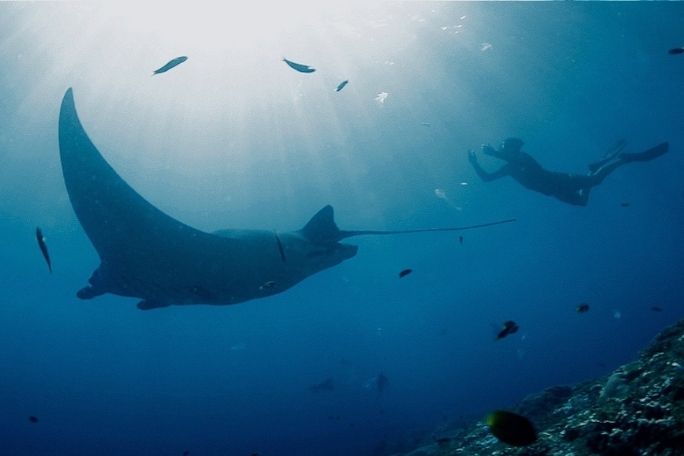Lesson summary
This lesson incorporates clips from Blue The Film as learning inspiration. Students are introduced to the topics of the unit by identifying the ways they think about and are connected to the ocean. Students begin by completing a ‘Colour-Symbol-Image’ thinking routine. They are then asked to consider how they think about the ocean and work together to produce a word cloud based on their ideas. Students will then consider the messages of Blue – particularly in terms of some of the animals featured in the film – and work independently to create their own communication piece to share the message that they resonate with the most.
Learning intentions:
Students will...
- understand some of the key features of two marine creatures: marine turtles and seabirds
- understand how to communicate a message about our oceans.
Success criteria:
Students can...
- share their thoughts with others to express an idea or viewpoint
- express their ideas as a picture, poem or story
- identify ways we can all help the marine species.
Lesson guides and printables
Lesson details
Curriculum mapping
Australian Curriculum content descriptions:
Year 3 English:
- Identify the audience and purpose of imaginative, informative and persuasive texts (ACELY1678)
- Plan, draft and publish imaginative, informative and persuasive texts demonstrating increasing control over text structures and language features and selecting print,and multimodal elements appropriate to the audience and purpose (ACELY1682)
Year 4 English:
- Identify characteristic features used in imaginative, informative and persuasive texts to meet the purpose of the text (ACELY1690)
- Plan, draft and publish imaginative, informative and persuasive texts containing key information and supporting details for a widening range of audiences, demonstrating increasing control over text structures and language features (ACELY1694)
Year 3 Science:
- Science knowledge helps people to understand the effect of their actions (ACSHE051)
Year 4 Science:
- Science knowledge helps people to understand the effect of their actions (ACSHE062)
Syllabus outcomes: EN2-8B, EN2-2A, ST2-11LW.
General capabilities: Critical and Creative Thinking.
Cross-curriculum priority: Sustainability OI.2, OI.4.
Relevant parts of Year 3 English achievement standards: Students understand how language can be used to express feelings and opinions on topics. Their texts include writing and images to express and develop, in some detail, experiences, events, information, ideas and characters.
Relevant parts of Year 4 English achievement standards: Students create structured texts to explain ideas for different audiences.
Relevant parts of Year 3 Science achievement standards: Students understand how they can use science investigations to respond to questions.
Relevant parts of Year 4 Science achievement standards: Students identify when science is used to understand the effect of their actions.
Unit of work: Blue The Film: Inquiry – Years 3 & 4.
Time required: 60 mins.
Level of teacher scaffolding: High – oversee activities, lead discussion and gallery walk.
Resources required
- Student Worksheet – one copy per student
- Device capable of presenting a website to the class
- Recycled paper and pencil for each student
- Board or butcher’s paper for the class word cloud
- Art materials or digital medium materials
Skills
This lesson is designed to build students’ competencies in the following skills:
- Communication
- Creativity
- Social skills
- Community engagement
- Social Skills
Additional info
Blue is a feature documentary film charting the drastic decline in the health of our oceans. With more than half of all marine life lost and the expansion of the industrialization of the seas, the film sets out the challenges we are facing and the opportunities for positive change. Blue changes the way we think about our liquid world and inspires the audience to action. Find out how to screen or download the film here. Along with the film is an ambitious global campaign to create advocacy and behaviour change through the #oceanguardian movement. To become an ocean guardian, see the website.


Welcome back!
Don't have an account yet?
Log in with:
By signing up to Cool.org you consent and agree to Cool's privacy policy to
store, manage and process your personal information. To read more, please see
our privacy policy here(Opens in new tab).
Create your free Cool.org account.
Many of our resources are free, with an option to upgrade to Cool+ for premium content.
Already have an account?
Sign up with:
By signing up to Cool.org you consent and agree to Cool's privacy policy to
store, manage and process your personal information. To read more, please see
our privacy policy here(Opens in new tab).